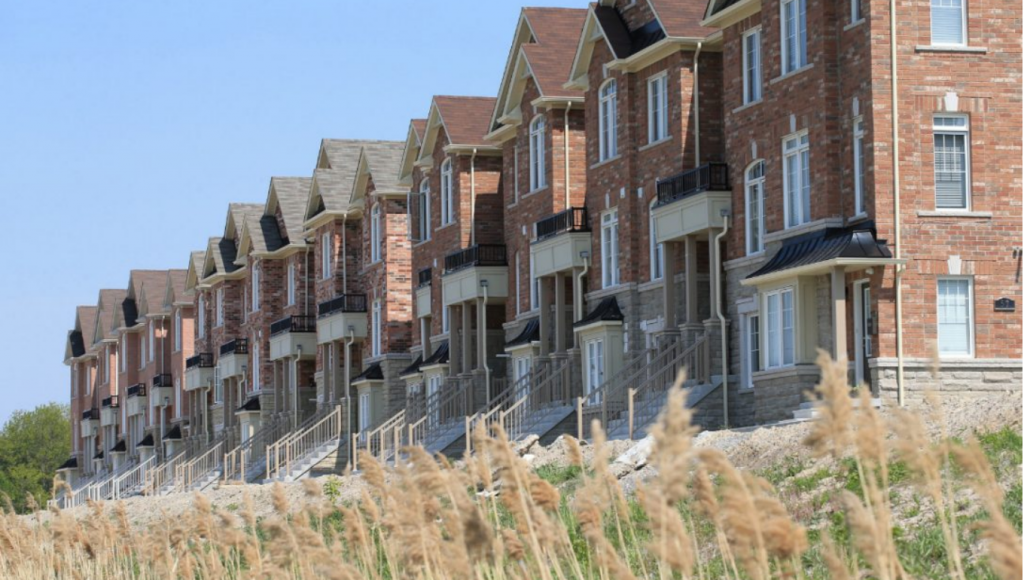The loans with 30-year amortizations, as opposed to 25 years, are slowly becoming the norm for consumers with a down payment of 20 per cent or more.
That segment of the market is often referred to as the less risky, low-ratio mortgage market: Since the loans have more equity, it takes a more pronounced housing downturn before they are underwater. But what is becoming clear is that consumers in what is called the uninsured mortgage market — those with loans not backed by federal government guarantees — are taking advantage of financial institutions letting them stretch out their amortizations.
The result is a smaller monthly payment that allows the consumer to borrow more in heated markets like Toronto and Vancouver, where resale home prices rose 16 per cent and 30 per cent, respectively, in May, from a year ago.
In its June Financial System Review, the Bank of Canada said the percentage of uninsured borrowers with an amortization of more than 25 years had climbed by almost 10 per cent from 2014 to 2015. In total, 58 per cent of new uninsured loans in 2015 opted for an amortization length of more than 25 years.
“To help lower the large mortgage payments typical of higher loan-to-income ratios, an increasing proportion of uninsured mortgages have been amortized over more than 25 years,” the BoC said. “The resulting slower repayment of debt leads to a higher aggregate level of household indebtedness.”
In 2014, 42 per cent of loans in the uninsured mortgage segment had an amortization of more than 25 years. That number climbed to 46 per cent in 2015 and is likely to grow again this year.
The Bank of Canada said that despite an increase in mortgages with high loan-to-income ratios and longer amortizations, arrears rates remain very low and are actually falling in British Columbia and Ontario.
But if longer amortizations sound familiar, it’s because that’s exactly happened with the insured market before the financial crisis in 2008. Canadians with less than 20 per cent down must buy what is called mortgage default insurance. Canada Mortgage and Housing Corp., the largest provider of such insurance, charges as much as 3.6 per cent of the value of a mortgage for insurance, which protects the banks in case of default.
The numbers are meaningful when it comes to longer amortizations. Rob McLister, the founder of ratespy.com, says that based on a five-year fixed-rate mortgage at 2.49 per cent, it takes about $174,000 of income to qualify for a $1-million mortgage. Stretch the amortization to 30 years and you only need income of about $157,500; based on an amortization of 35 years, you would need only $145,500 in household income.
“The big banks won’t do 35 years,” says McLister, adding that some minor lenders will go to 35 years for uninsured mortgages, but it’s a “small percentage” of the market. “The payment difference is material, it’s not huge. Any mortgage broker will tell you there is a small percentage of people that need to use longer amortizations to qualify.”
CMHC’s own data for low-ratio mortgages shows the average amortization was 25.1 years in the first quarter of 2016 — down from 26.1 per cent in the last quarter of 2015. Still, in the first quarter of 2016, 38.6 per cent of the mortgage loans it tracked were for an amortization of between 25 and 30 years, and 3.7 per cent opted for between 30 and 35 years.
In British Columbia, easily the most expensive province in which to buy a home, the average amortization length was 26.8 years for a low-ratio mortgage.
There are reasons to go for a longer amortization other than just trying to barely qualify via a lower monthly mortgage payment. Consumers with high-interest credit card debt are much better off paying that down first, and a lower monthly mortgage payment gives a homeowner more flexibility with most mortgages allowing consumers to bump their monthly payments by as much as 20 per cent.
“Most of the reason is people are trying to qualify,” says one economist, who asked not to be identified. “But when we say ‘qualifying,’ what are we talking about? It’s a starvation rate. What do you have left after 40 per cent of your gross income goes (towards housing costs). Add in tax — what’s left?”
Barry Gollom, vice-president, mortgages and lending with Canadian Imperial Bank of Commerce, says the 30-year amortization is becoming a more popular structure, but his bank continues to encourage customers to go with the lower 25 years.
“What it comes down to is a strong real estate environment and home prices,” says Gollom, adding that, in many cases, people will pay their mortgage over a much shorter period than 30 years because of accelerated payments.


Leave a Reply